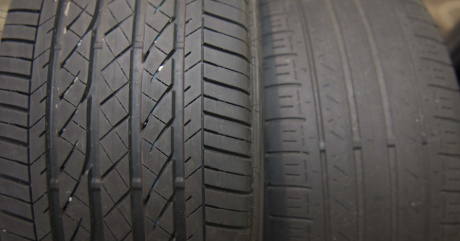
When the time comes to replace your tires, the waiting time to see the mechanic seems like forever. Chances are that you might be thinking about when to replace tires even now.
According to car mechanic experts, you don’t need to replace your car tires as long as you don’t see one of the three most common tire damage symptoms. According to the law, depending on the locality, driving with even one of these tire damage indications is a punishable offense.
Sidewall Bubbles
You might have seen tires with a candy-sized bubble on their sidewalls. Sadly, most people ignore these bubbles, thinking it is some malfunction with the air release within the tube and nothing much serious. But in reality, this is an indicator of an upcoming car accident that is just waiting to have happened.
This candy-sized bubble is an actual air bubble the indicates a massive reservoir bubbling up beneath it. This air bubble and burst out any minute, causing a sudden tire blowout that can result in a serious and even fatal accident, especially when you are driving at high speed. If you were thinking about when to replace tires, this would be a perfect time.
Dry Rotting
Dry rotting of tires is associated with the excessive use of tires, especially in arid and hot weather conditions. Generally, the majority of car owners in the US believe that dry rotting is an indicator that helps them most in determining when to replace tires.
Dry rotting causes a spider web or a dry rot like rubber decaying to appear around your car tires' sidewalls. These lines can eventually cause the tire to fall apart, separating it from the steel belt midway causing severe accidents.
Tread Damage
Tread is the only thing that gives your car tires the ability to stick to the ground and generate road friction that keeps your vehicle stable.
If you are someone who believes that tread damage is an indicator of the time when you should replace the tires, you are indeed a true car enthusiast.
According to US law, you need to change your car tires as soon as possible if the tread level is below 2/32''. Below this level, the car tire practically has zero tread friction left, and it becomes hazardous to use on the road.
Final Note
The U.S. authorities have set up measures to ensure that road accidents per year stay below a specific limit. For this purpose, U.S. law contains clear guidelines regarding tire maintenance and when to replace tires. The law gives the authorities the power to take immediate and swift actions against any potential offender.
You might be thinking that this is a bit of an extreme level of precautions. However, a sudden tire malfunction will not be affecting you alone. It will impact the people driving around you as well. That's why road safety authorities are dedicated to maintaining a secure road environment where everyone can drive safely.
Same articles

Understanding Vehicle Inspection and Verification Services: Why They Matter for Every Driver
GuidesVehicle inspection and verification services are an essential but often overlooked part of keeping roads safe and cars legally compliant. Most people only think about inspections when it’s...
KLIFEX Brand Overview: High-Quality Automotive Repair Kits for Affordable Repairs
GuidesThe automotive aftermarket has long needed solutions that combine reliability, durability, and affordability. Many car enthusiasts and services are looking for a way...
Fast, Reliable Vehicle Emissions & Inspection Services Made Simple
GuidesFast, reliable emissions and inspection services are essential for keeping vehicles road-ready, compliant with environmental regulations, and safe for daily driving. If you’re looking for quick...

